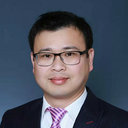Ultrafast Meets Ultrasmall: Laser Writing at the Quantum Frontier
Ultrafast Meets Ultrasmall: Laser Writing at the Quantum Frontier
Hosted By: Lasers in Manufacturing Technical Group
24 May 2024 8:00 - 9:00
Eastern Daylight/Summer Time (US & Canada) (UTC -04:00)Since the introduction of femtosecond lasers in the early 1990s, ultrafast laser processing has emerged as a highly promising method for nanofabrication. This technique is particularly well-suited for the manufacturing of hard materials and the creation of intricate three-dimensional structures. One of the standout advantages of laser manufacturing is its flexibility in beam manipulation and its capability for batch production without the need for photomasks.
Nevertheless, achieving nanometric precision, particularly for sub-10 nm structures in hard material processing, remains a significant challenge. This has led to a persistent question in the field: What is the ultimate resolution limit of this technology, and how fine can its level of precision reach? Despite considerable efforts to address this issue, the answer remains elusive and poses a continuing challenge in the realm of nanofabrication.
In this webinar, Hong-Hua Fang will present our recent progress in laser fabrication, which has reached a new level. Dr. Fang has demonstrated close-to-atomic-scale manufacturing with feature sizes as small as a few nanometers, i.e., less than 5 nm or λ/100. This breakthrough allows for the deterministic creation of single-photon color centers with a nearly unit yield. The potential applications of this technology are vast, ranging from single-photon sources to single-electron transistors, single-atom memory, and quantum-bit devices for future communication, computation, and sensing applications.
What You Will Learn:
• Ultrafast laser processing for nanofabrication
• The applications of laser writing for quantum applications, such as single-photon sources
About the Presenter: Hong-Hua Fang from Tsinghua University
 Hong-Hua Fang is an Associate Professor in the Department of Precision Instrument at Tsinghua University since 2019. He completed his Bachelor's degree in 2006 and Master's degree in 2009 from Jilin University. In 2013, he received his Ph.D. in Microelectronics and Solid State Electronics from the same university. After that, he worked at the University of Groningen in the Netherlands as a postdoc and later at the Institut National des Sciences Appliquées in Toulouse, France, where he was part of the Laboratory of Physics and Chemistry of Nano-Objects. In 2019, he joined Tsinghua University as a faculty member. His research focuses on laser processes and optoelectronic properties of quantum materials, as well as their applications in photonics and optoelectronic devices. He has authored and co-authored over 100 papers in peer-reviewed journals such as Science, Science Advances, Nature Communications, Physical Review Letter and Laser Photonics Review.
Hong-Hua Fang is an Associate Professor in the Department of Precision Instrument at Tsinghua University since 2019. He completed his Bachelor's degree in 2006 and Master's degree in 2009 from Jilin University. In 2013, he received his Ph.D. in Microelectronics and Solid State Electronics from the same university. After that, he worked at the University of Groningen in the Netherlands as a postdoc and later at the Institut National des Sciences Appliquées in Toulouse, France, where he was part of the Laboratory of Physics and Chemistry of Nano-Objects. In 2019, he joined Tsinghua University as a faculty member. His research focuses on laser processes and optoelectronic properties of quantum materials, as well as their applications in photonics and optoelectronic devices. He has authored and co-authored over 100 papers in peer-reviewed journals such as Science, Science Advances, Nature Communications, Physical Review Letter and Laser Photonics Review.
